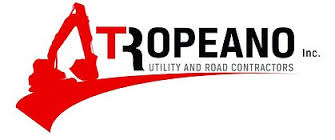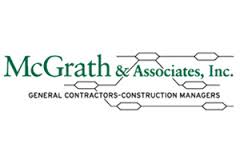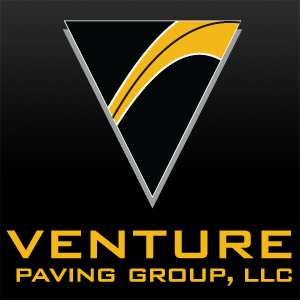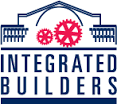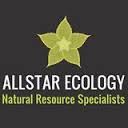Texas Stormwater Management
Texas State Overview
The state of Texas and the Texas Commission on Environmental Quality (TCEQ) were granted delegated authority by the EPA to administer their own National Pollutant Discharge Elimination System (NPDES) Permitting Program for wastewater and stormwater discharges associated with construction activity, industrial activity as well as Municipal Separate Storm Sewer System (MS4) activity. Because the EPA and The Clean Water Act required a program for addressing the pollution caused by stormwater discharges, The Texas Commission on Environmental Quality implemented and managed the Texas Pollutant Discharge Elimination System (TPDES) Permitting Program to fulfill all Clean Water Act and federal mandates. The TPDES provides a process for project owners and operators to attain permit coverage allowing the discharge of stormwater and wastewater into Texas surface waters.
The Texas Pollutant Discharge Elimination System (TPDES) Construction General Permit authorizes point source discharges of stormwater from: (1) construction activities (clearing, grading, filling and excavating, borrow pits and stockpile/material storage areas containing erodible material, or other similar construction activities) that result in the disturbance of one (1) acre or more of total land area or projects or developments of less than one (1) acre of land disturbance but construction activities at the site are part of a larger common plan of development or sale that comprise at least one (1) acre of land disturbances; (2) small and large construction activities; as well as (3) construction support activities (concrete batch plants, rock crushers, asphalt batch plants, equipment staging areas, material storage yards, material borrow areas, and excavated material disposal areas).
The StormwaterONE credentialing program specifically covers the Texas CGP. Sample content contained in the course includes, but is not limited to:
Section E. Obtaining Authorization to Discharge
1. Automatic Authorization for Small Construction Activities with Low Potential for Erosion
Operators of small construction activities, as defined in the permit, do not need to submit a Notice of Intent (NOI) unless specifically required by the executive director.
Small construction activities may be automatically authorized under the general permit if the following conditions are met before construction begins:
- Location and Timing: The construction must occur in a county and during the date range specified in Appendix A.
- Completion and Stabilization: The construction must start and finish within the specified time frame, including either final or temporary stabilization of all disturbed areas.
- Stabilization Maintenance: Temporary stabilization must be maintained effectively, permanent stabilization activities must begin, and final stabilization must be completed within 30 days after the specified time frame ends. Additionally, the permittee must sign the TCEQ Small Construction Site Notice for low potential for erosion (Form TCEQ-20964), including the certification statement.
Section F of the general permit outlines the process for terminating coverage for large construction activities authorized under the permit. Key points include:
1. **Notice of Termination (NOT) Submission**: Operators must apply to terminate their authorization after completing certain conditions. This is done electronically via the ePermits system on the TCEQ (Texas Commission on Environmental Quality) website or on a paper form with an approved waiver from electronic reporting. The authorization ends at midnight on the postmark date for paper notices or immediately upon electronic confirmation.
2. **Waivers**: Waivers from electronic reporting are specific to the operator and expire with the discharge authorization or, for temporary waivers, after one year.
3. **Submission Timelines**: An NOT must be submitted within 30 days of final stabilization, transfer of operational control, or obtaining alternative authorization. Copies must also be provided to MS4 operators receiving the discharge.
4. **Continued Compliance**: All permit conditions must be followed until TCEQ approves the NOT.
5. **NOT Content Requirements**:
- TPDES authorization number for the construction site.
- Indication of final stabilization or change in operational control.
- Permittee's contact details.
- Site's name, address, county, and location coordinates.
- A signed certification stating that:
- Discharges under the permit have ceased or the operator has changed.
- Temporary erosion controls are removed, scheduled for removal, or transferred to a new operator (if applicable).
- Permanent erosion control measures designed to stay indefinitely do not need to be removed.
In summary, this section ensures proper closure of permit coverage, maintaining environmental responsibility until official termination, and clear communication with relevant authorities and stakeholders.
Low Rainfall Erosivity Waiver (LREW) - Sample
Small construction operators can obtain a waiver from authorization requirements under a general permit if the rainfall erosivity factor for their project is less than 5. To qualify, they must submit a Low Rainfall Erosivity Waiver (LREW) form via the TCEQ's ePermits system. This form certifies that the construction activity will start and finish within specified conditions.
Standard Permit Conditions - Sample
In case of flooding or other conditions that prevent inspection site access, inspections must be performed as soon as possible afterward. Inspection reports must be completed within 24 hours, detailing the inspection scope, dates, and major observations related to SWP3 implementation, including erosion locations, maintenance needs, BMP failures, and areas requiring additional BMPs. Actions taken in response to inspections, including dates, must be documented in the SWP3. Reports must identify non-compliance incidents and, if no non-compliance is found, a compliance certification must be included. The report must be kept as part of the SWP3 and signed as per 30 TAC § 305.128 requirements.
The state of Texas and the Texas Commission on Environmental Quality (TCEQ) were granted delegated authority by the EPA to administer their own National Pollutant Discharge Elimination System (NPDES) Permitting Program for wastewater and stormwater discharges associated with construction activity, industrial activity as well as Municipal Separate Storm Sewer System (MS4) activity. Because the EPA and The Clean Water Act required a program for addressing the pollution caused by stormwater discharges, The Texas Commission on Environmental Quality implemented and managed the Texas Pollutant Discharge Elimination System (TPDES) Permitting Program to fulfill all Clean Water Act and federal mandates. The TPDES provides a process for project owners and operators to attain permit coverage allowing the discharge of stormwater and wastewater into Texas surface waters.
Read more »
At this time there are no Face-to-Face training events scheduled in Texas.
If you are a stormwater trainer and would like to advertise your upcoming events, check out our Trainer Alliance Program by visiting our Field Advisors page.
Highly Recommended SWPPP Certification
Rating: 5.0 / 5.0







